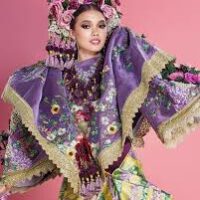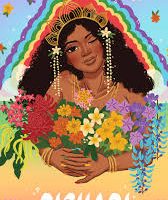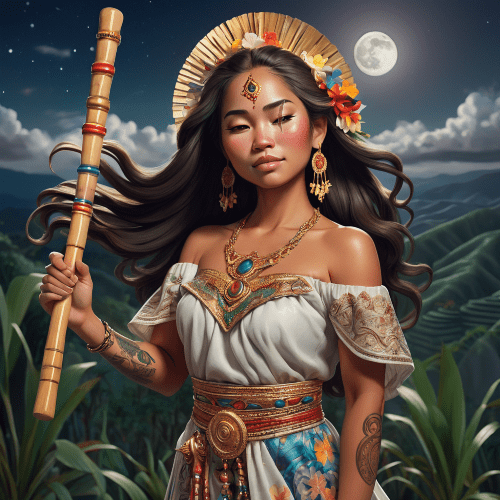Bighari : Goddess of Flowers
Listen
At a glance
| Description | |
|---|---|
| Origin | Philippine Mythology |
| Classification | Gods |
| Family Members | Bathala (Father), Tala, Liwayway, Tag-ani, Kidlat, Hangin, Araw (Siblings) |
| Region | Philippines |
| Associated With | Flowers, Rainbow |
Bighari
Introduction
Bighari, the flower goddess of Tagalog mythology, embodies grace, beauty, and the deep bond between nature and the divine. As the daughter of Bathala, the supreme god of the ancient Tagalog pantheon, she holds a special place among the celestial beings. Her story, passed down through generations, offers a poetic explanation for the rainbow—referred to as bahaghari in Filipino—and celebrates the origin of floral abundance on Earth. This myth, deeply rooted in pre-colonial Filipino spirituality, portrays Bighari as both a figure of joy and quiet sorrow, whose exile from the heavens brought eternal beauty to the mortal world.
Physical Traits
In mythological depictions, Bighari is envisioned as a stunningly elegant deity whose presence makes gardens bloom in riotous color. She is described as having long flowing hair that glimmers with the full spectrum of the rainbow, a living embodiment of bahaghari. Her garments are imagined as gowns of fresh petals that shift hues with the sunlight. Wherever she walks, flowers spring to life, reflecting her divine connection to Earth’s natural vibrancy. Her appearance captures the enchanting fusion of light, color, and flora, making her one of the most visually striking figures in the Tagalog mythological canon.
Family
Bighari belongs to a powerful and symbolic family led by Bathala, the creator deity. Her siblings each represent significant elements of the cosmos and nature, forming a divine collective responsible for maintaining cosmic balance. Among them are Tala, the radiant morning star; Liwayway, the glowing dawn; Tag-ani, the giver of harvest; Kidlat, the fierce god of lightning; Hangin, the ever-changing wind; and Araw, the blazing sun. While her brothers and sisters wield elemental might or celestial guidance, Bighari’s role is more nurturing, offering beauty, serenity, and subtle transformation through her floral influence.
Other names
Though she is widely known as Bighari, her identity is intrinsically linked to the term bahaghari, which directly translates to “rainbow” in Tagalog. This term not only reflects her visual association but also hints at her emotional journey. The rainbow is said to be her gift to humanity—a reminder of her divine heritage and eternal presence on Earth. While there are few known variations of her name, her symbolic essence lives on in every appearance of the rainbow across the Philippine skies, seamlessly weaving myth into everyday experience.
Powers and Abilities
As the goddess of flowers, Bighari’s powers are both enchanting and transformative. She brings life to the land with her mere presence, causing once-barren fields to burst with blossoms. Her influence stretches across seasons, ensuring the cyclical rebirth of flora. One of her most significant abilities is creating the rainbow, a magical arc of color that bridges her divine origins and earthly exile. In some interpretations, she also holds protective powers over love and relationships, particularly safeguarding marriages from disharmony. While her gifts are largely peaceful, legends suggest that she can curse those who dishonor beauty, nature, or familial duty—further reinforcing her role as a deity of balance and emotional resonance.
The central myth of Bighari revolves around her love for the earthly realm. When Bathala summoned his children for an important celestial council, Bighari chose to linger in her garden instead of answering the call. This repeated defiance angered her father, who ultimately exiled her to Earth as punishment. Though banished, Bighari refused to mourn. Instead, she nurtured the land with such love and attention that it blossomed in ways the heavens never knew. Moved by her dedication and sorrow, the people built an arch of flowers to honor her presence. This arch, transformed by divine energy, became the first rainbow. It is now seen as a lingering trace of her beauty in the sky—a visual expression of longing, forgiveness, and divine presence.
Modern Day Influence
Today, Bighari remains a vital symbol in Philippine culture. The bahaghari is more than a weather phenomenon; it represents hope, continuity, and the interconnectedness of heaven and Earth. Her myth is still recounted in folklore festivals, especially in the Tagalog-speaking regions and parts of Mindoro, where local versions of the story endure. Artists and illustrators often portray her in vibrant imagery celebrating Filipino heritage, while educators use her story to connect children with ancestral knowledge.
Bighari has also become an emblem in environmental movements. Her association with flowers and gardens makes her an apt icon for campaigns focused on biodiversity and reforestation. Beyond environmentalism, she is occasionally referenced in social movements promoting inclusivity, love, and healing—values she symbolizes in myth. Her image appears in digital art, independent comic books, podcasts, and reimagined mythological anthologies, making her an active part of the modern Filipino creative renaissance.
Furthermore, modern spiritual practitioners who honor indigenous Filipino beliefs may include Bighari in rituals for relationship harmony or for inviting beauty and balance into their homes. In this context, she is more than a mythical figure—she is a spiritual ally, guardian of peace, and patron of emotional well-being.
Related Images
Source
Abrigo, E. N. (1971). Oriental Mindoro Folktales: An Analysis (M.A. Thesis, Philippine Women’s University), pp. 61–64.
Eugenio, D. L. (2001). Philippine Folk Literature: The Myths. University of the Philippines Press.
Clark, J. (2022). Bathala’s Seven Children. The Aswang Project. Retrieved from https://www.aswangproject.com/bathalas-seven-children/
Dimapilis, A., & Lacsamana, I. (2023). Rainbow Connection: Legends of the Bahag-Hari. The Gods Must Be Crazy Podcast. Retrieved from https://podtail.com/en/podcast/the-gods-must-be-crazy-a-philippine-mythology-podc/72-rainbow-connection-legends-of-the-bahag-hari-in/
Wikipedia contributors. (2023). List of Philippine mythological figures. Wikipedia. Retrieved from https://en.wikipedia.org/wiki/List_of_Philippine_mythological_figures
Frequently Asked Questions
What is lorem Ipsum?
I am text block. Click edit button to change this text. Lorem ipsum dolor sit amet, consectetur adipiscing elit. Ut elit tellus, luctus nec ullamcorper mattis, pulvinar dapibus leo.
What is lorem Ipsum?
I am text block. Click edit button to change this text. Lorem ipsum dolor sit amet, consectetur adipiscing elit. Ut elit tellus, luctus nec ullamcorper mattis, pulvinar dapibus leo.
What is lorem Ipsum?
I am text block. Click edit button to change this text. Lorem ipsum dolor sit amet, consectetur adipiscing elit. Ut elit tellus, luctus nec ullamcorper mattis, pulvinar dapibus leo.
What is lorem Ipsum?
I am text block. Click edit button to change this text. Lorem ipsum dolor sit amet, consectetur adipiscing elit. Ut elit tellus, luctus nec ullamcorper mattis, pulvinar dapibus leo.
What is lorem Ipsum?
I am text block. Click edit button to change this text. Lorem ipsum dolor sit amet, consectetur adipiscing elit. Ut elit tellus, luctus nec ullamcorper mattis, pulvinar dapibus leo.











